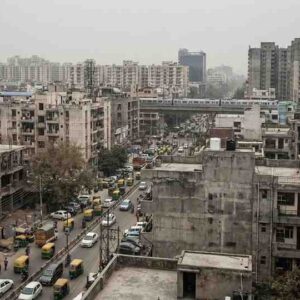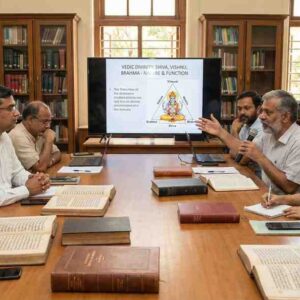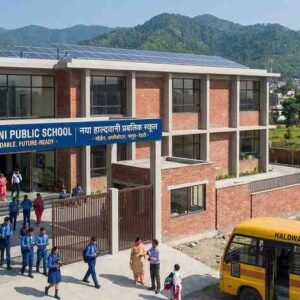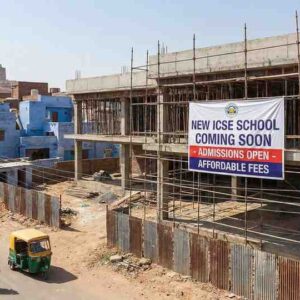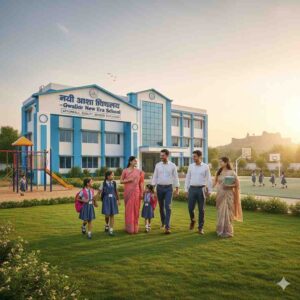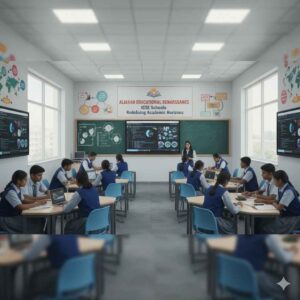New Delhi, India – 2025
The National Education Policy (NEP) 2020 has introduced a radical shift in the Indian education system, focusing on academic excellence, holistic development, and the integration of technology. However, one of the more contentious aspects of the NEP is its stance on physical space within schools, which is becoming less of a priority in favor of a broader, more flexible approach to learning. While this shift promises numerous advantages, it is also critical to question whether making physical space less crucial undermines some of the foundational principles of a well-rounded education.
The NEP’s Vision: Shifting Focus to Learning Over Infrastructure
The NEP places a heavy emphasis on the quality of education, teacher training, and the promotion of critical thinking and creativity. The policy encourages schools to focus on multidisciplinary learning, competency-based education, and the use of technology to enhance the learning experience. While these elements are crucial for creating a forward-thinking education system, the reduction in emphasis on physical space raises concerns about the potential drawbacks of an overreliance on non-physical aspects of education.
In a nation where schools—especially in rural areas—struggle with basic infrastructure like functioning toilets, proper classrooms, and playgrounds, it seems counterintuitive to downplay the importance of physical space. The NEP’s reduced emphasis on playgrounds, labs, and other physical resources suggests that these elements are no longer considered integral to fostering student success. The policy encourages a focus on quality learning through digital platforms and collaborative methods, which are undoubtedly beneficial in many ways. Yet, this shift could result in educational institutions ignoring the benefits that come from physical environments conducive to social, emotional, and intellectual development.
The Importance of Physical Space in Education
Physical space is not merely a backdrop for learning; it is a vital component of the educational experience. Studies consistently show that physical environments—classrooms, playgrounds, and sports facilities—directly impact student outcomes. Research by theAmerican Society of Interior Designershas shown that a well-designed classroom, with adequate space, lighting, and ventilation, can improve student focus, engagement, and overall academic performance. Similarly, playgrounds provide opportunities for physical development, social interaction, and mental well-being—factors that have been shown to enhance a child’s ability to learn.
In the NEP’s model, schools are encouraged to use their existing spaces more creatively, yet this assumes that smaller or underdeveloped schools can easily transform their limited environments into places of multifaceted learning. In reality, many schools, particularly in rural and semi-urban areas, lack basic infrastructure. In these situations, making physical space less of a priority only exacerbates the challenges already faced by educators and students. The NEP’s framework risks perpetuating inequality by undervaluing the importance of adequate physical resources, which remain a fundamental pillar for fostering inclusive and equitable education.
A Critical Perspective: Equity and Access Concerns
The NEP’s vision for a technology-driven, flexible learning model could widen the existing gap between schools in urban and rural areas. While cities might have the means to incorporate digital learning and virtual classrooms, many rural schools still struggle with basic needs like electricity, internet connectivity, and proper classrooms. By placing less importance on physical space, the policy may unintentionally widen the gap in educational quality, especially for underprivileged students who are already at a disadvantage.
Furthermore, the emphasis on digital learning raises concerns about screen time, digital literacy, and the ability of all students to fully engage with technology. With a growing number of students facing difficulties in adapting to online learning, it remains to be seen whether an overreliance on non-physical methods will adequately address the needs of a diverse student population.
Conclusion: A Need for Balance
While the NEP’s focus on improving the quality of education, teacher training, and learning outcomes is commendable, the reduction in emphasis on physical space is a concern. Physical environments, including classrooms, playgrounds, and sports facilities, are not merely complementary to education—they are essential to the development of well-rounded individuals. The policy must find a balance between integrating technology and maintaining the importance of physical infrastructure. Ensuring that schools are equipped with the necessary resources to provide both academic rigor and emotional development is crucial for the long-term success of the NEP. Without this balance, the policy risks leaving behind students who lack access to both quality learning and the physical space needed to thrive.

